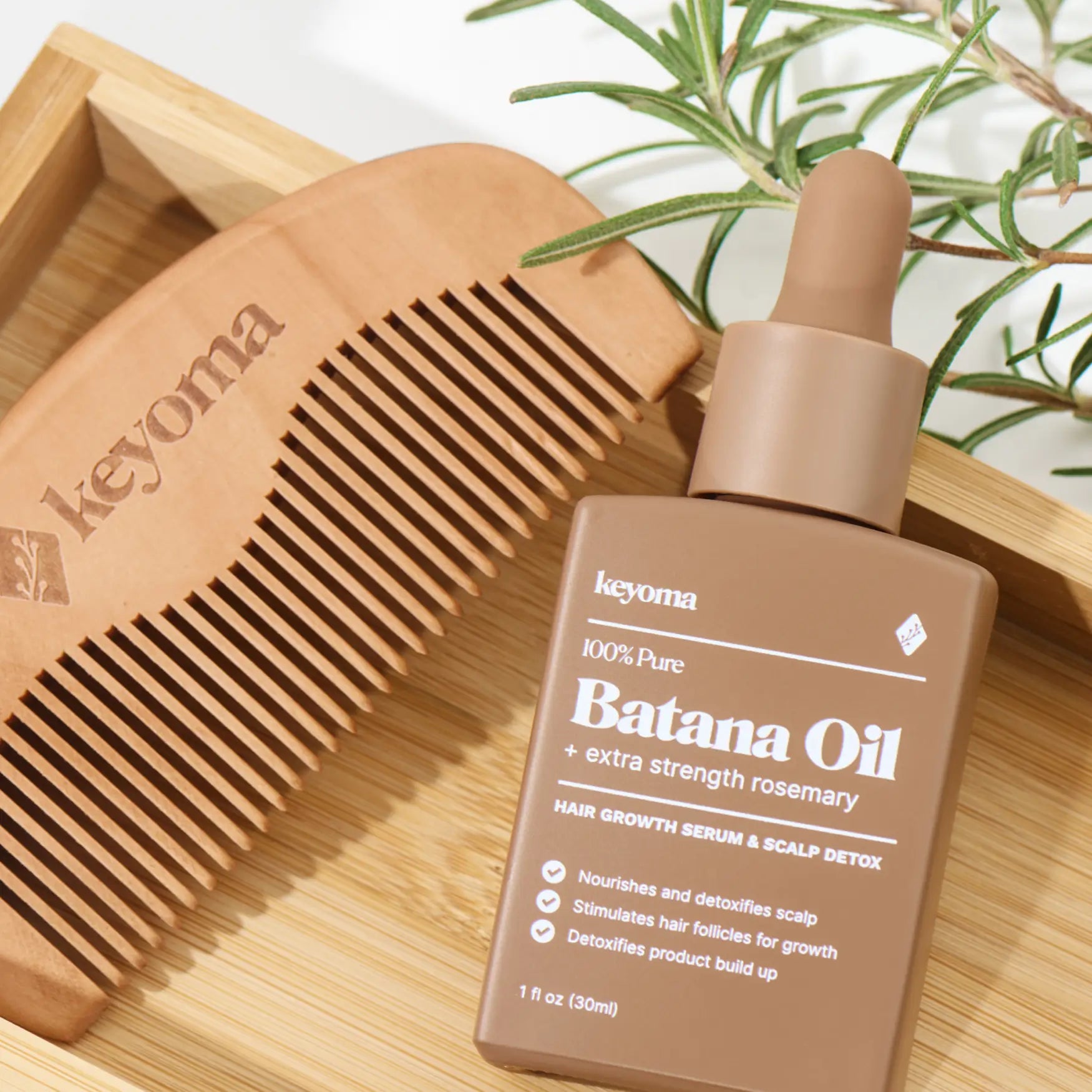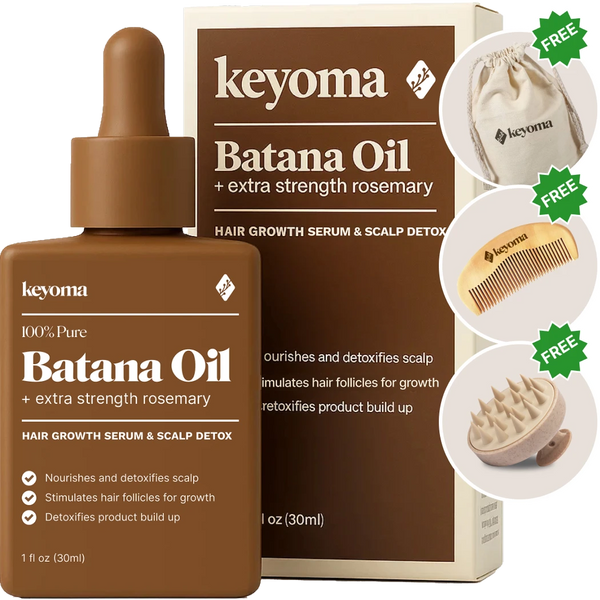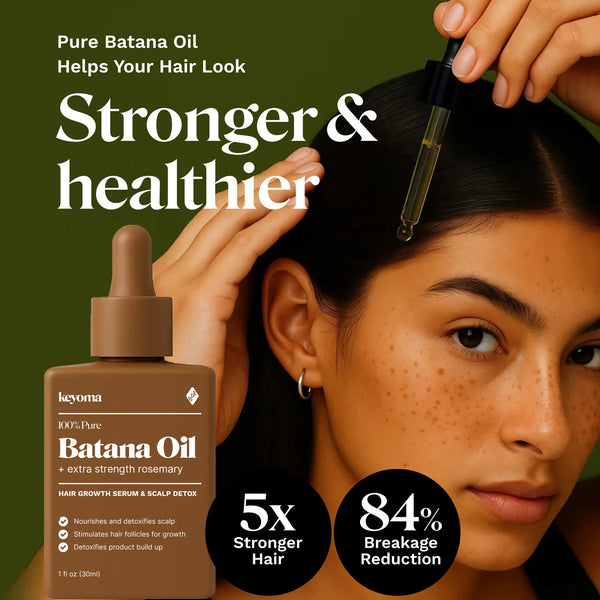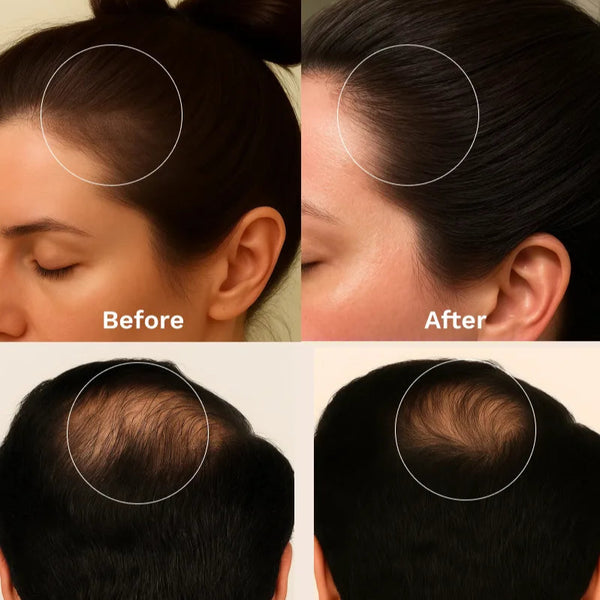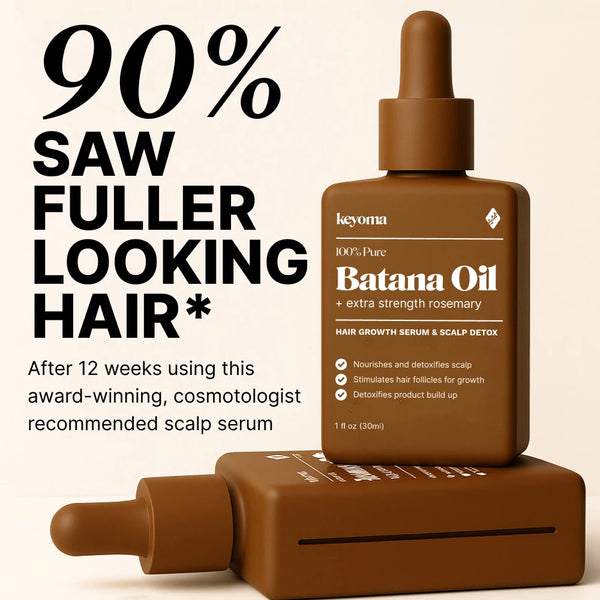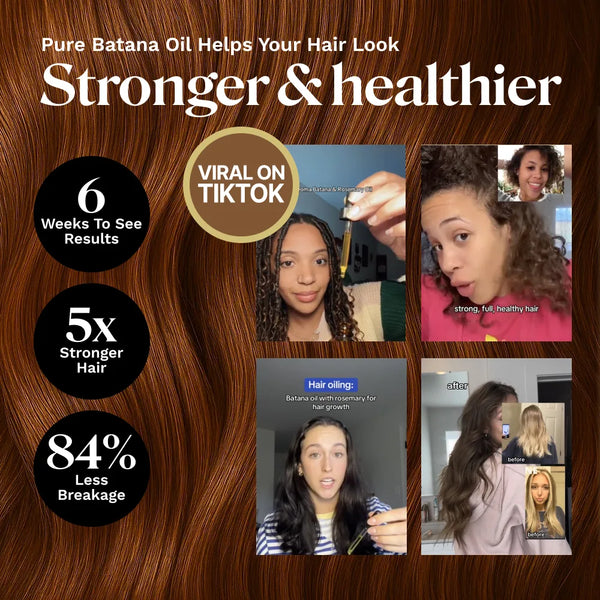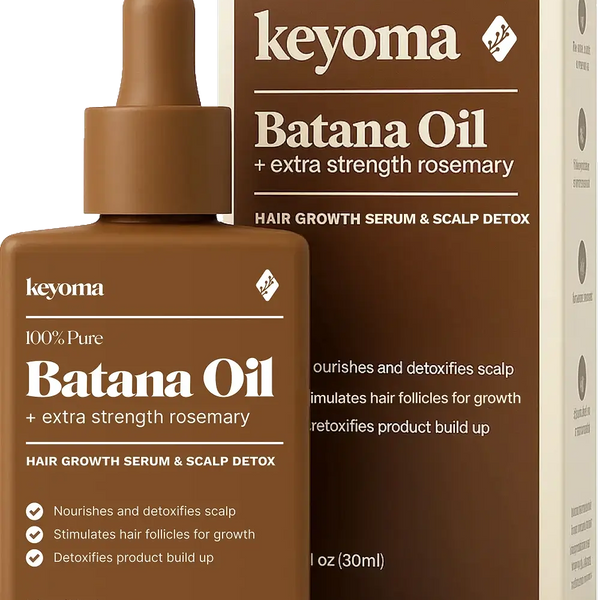In this article
Hair loss is very common in men, with about half experiencing male pattern thinning by the age of 50. If you have started exploring treatment options, you have probably come across two names again and again: minoxidil and finasteride.
These are the only two clinically proven treatments for male hair loss, but they work in very different ways. The real question is, which one is the right choice for you?
Key Takeaways
-
Finasteride and minoxidil are the only FDA-approved treatments for hair loss, but they work in very different ways.
-
Finasteride blocks DHT and usually provides stronger results, while minoxidil improves blood flow and extends the growth phase.
-
Combining both often delivers the best outcomes, though side effects and consistency are important considerations.
-
Choosing the right option depends on health, preferences, and goals, but natural oils will your support scalp health without harsh effects
What Is Finasteride and How Does It Help with Hair Loss?
Finasteride is an oral medication that helps men treat hair loss. It works by blocking the enzyme 5-alpha-reductase, the one responsible for turning testosterone into the hormone that triggers thinning hair. By lowering those levels, finasteride often encourages more hair follicles to grow on the scalp, which can reduce the look of bald spots.
You’ll see it sold under brand names like Proscar and Propecia, but it’s also widely available in generic forms. Doctors usually prescribe it in 1 mg doses, making it one of the most common treatments men use to fight hair loss.
How Finasteride Helps Prevent Hair Thinning
DHT plays a major role in male-pattern hair loss by acting on your hair follicles. When DHT binds to receptors in the follicle, it gradually shortens the growth phase and shrinks the follicle. Over time, this leads to thinner, shorter strands until the growth phase becomes so brief that new hairs stop breaking through the scalp altogether.
Finasteride tackles this problem by blocking DHT production. It inhibits 5-alpha-reductase, the enzyme that converts testosterone into DHT. As a result, DHT levels in your scalp drop by about 60 percent, which helps slow down hair loss and, in some cases, encourages regrowth.
What Is Minoxidil and How Does It Support Hair Regrowth?
Minoxidil is a well-known medication that helps slow hair loss and encourage regrowth. While it’s most often used for male pattern baldness, many women dealing with thinning hair also see results. You can use minoxidil topically or take it orally, depending on what your doctor prescribes.
The most common topical brand you’ll hear about is Rogaine, usually available in 2% and 5% strengths. For example, some brands offer a 5% minoxidil foam. There’s also an oral version, sold under the brand name LONITEN, which comes in tablet form.
With consistent use, minoxidil has been proven to stimulate hair growth. It works by shortening the resting phase of your hair follicles and pushing them into a longer growth phase, also known as the anagen phase. Over time, this process helps you see thicker, healthier-looking hair.
How Minoxidil Works for Thinning Hair
You apply minoxidil as a spray solution on your scalp twice a day, once in the morning and once at night. It works in a few key ways:
-
It widens blood vessels, boosting nutrient-rich blood flow to your follicles and supporting regrowth.
-
It extends the anagen phase of the hair cycle, the active “growth” stage where new strands form.
-
It enlarges follicles and thickens individual hairs, making your hair look fuller and denser.
Minoxidil vs Finasteride Results: Which Works Better for Hair Loss?
Whether finasteride or minoxidil works better really depends on if you’re using them alone or together. When researchers compared finasteride by itself to minoxidil by itself, finasteride showed stronger results. In one long-term study, men who stayed on finasteride for five years saw noticeable regrowth and a halt in further loss in 2021.
Another year-long trial revealed that taking oral finasteride once daily outperformed applying topical minoxidil twice a day. In that study, 80.5% of men on finasteride and 59% of men on minoxidil reported improvements in 2015.
That doesn’t mean minoxidil alone can’t help you. It just works through a different pathway. Trials comparing 2% and 5% minoxidil to a placebo showed that users of either strength had a 70% greater boost in hair density at 16 and 26 weeks of treatment in 2021. Not surprisingly, the stronger 5% solution delivered better regrowth than the 2% version in 2007.
Can You Combine Minoxidil and Finasteride for Hair Regrowth?
In one study, men applied a topical mix of 0.25% finasteride and 3% minoxidil. Compared to using 3% minoxidil on its own, the combo delivered noticeably better regrowth. Participants saw thicker strands, higher hair density, and better results in photographic reviews.
The improvements showed up as early as the fourth month, and nearly 90% of users reported some level of progress with the combined treatment in 2018.
Possible Side Effects of Minoxidil and Finasteride

Every medication comes with some side effects, but the good news is that finasteride and minoxidil usually cause only mild ones.
Finasteride side effects
Some men notice:
-
Chills
-
Cold sweats
-
Confusion
-
Dizziness or feeling lightheaded
Topical minoxidil side effects
When you apply minoxidil to your scalp, you might notice:
-
Mild stinging or redness where you applied it
-
An occasional rash (though this is rare)
Oral minoxidil side effects
If you take oral minoxidil, you may experience:
-
Extra hair growth, often on your face, arms, or back
-
Breast tenderness
-
Headaches
-
Bloating
-
Flushing or redness in your skin
-
Swelling in your feet or lower leg
What Results to Expect from Minoxidil and Finasteride Treatments
If both finasteride and minoxidil work the way they should, you’ll likely notice less shedding and more regrowth. Of course, results vary from person to person, but one study found that 94.1% of men using both treatments together saw improvement in hair growth. By comparison, 80.5% improved with finasteride alone and 59% with minoxidil alone.
To get the best outcome, you need to use either treatment every day. Once you stop, hair loss usually picks up again and any regrowth fades. In other words, if you want to keep your results, you’ll need to stay consistent with the routine long term.
Minoxidil vs Finasteride: Choosing the Right Option for Your Hair

The better choice between minoxidil and finasteride really depends on your situation. Here are some things to weigh:
Sex: Finasteride is only for men, while minoxidil works for both men and women.
Side effects: If you’re worried about heart-related issues, you may want to avoid minoxidil. If you’re concerned about sexual side effects, finasteride might not be your best fit.
BPH (enlarged prostate): If you deal with prostate symptoms, finasteride could address both your prostate and hair loss concerns.
High blood pressure: If you have high blood pressure, your doctor may suggest minoxidil tablets since they can lower pressure and support hair growth.
Pheochromocytoma: If you have this adrenal gland tumor, you should avoid minoxidil altogether.
Availability: If you’d rather not get a prescription, over-the-counter topical minoxidil might be the easiest option.
Insurance coverage: If you want your medication covered, finasteride is usually the better choice. Minoxidil tablets can sometimes be an option, but doctors prescribe them off-label for hair loss.
Timing: With topical minoxidil, results often show in two to four months. With finasteride, some men notice changes within three months.
Preference: Some people prefer a pill, others like a topical. It comes down to what feels easier for you.
Other factors might play into your decision, so it’s always worth checking in with your healthcare provider to figure out the best plan for your needs.
Step Towards a Healthier Hair with Keyoma’s Natural Oil
Minoxidil and finasteride remain the most researched medical options for slowing and reversing hair loss, but they also come with side effects and require long-term commitment. Deciding between them depends on your health, comfort level, and treatment goals.
At the same time, many people choose to begin with natural approaches to support scalp health and reduce breakage before moving on to prescriptions. Keyoma Pure Batana Oil with Rosemary is packed with nutrients and antioxidants that nourish your scalp, strengthen fragile strands, and encourage healthier, fuller-looking hair.
Starting with a natural treatment allows you to care for your hair daily without harsh effects, making it a simple step toward stronger growth and lasting confidence.
Featured Product
100% Pure Batana Oil + Rosemary
↓Best Batana Oil to Buy↓
1 Month
Subscribe & Save
- 30-day supply delivered monthly $35
- 30% off for life $6
- Free haircare essentials kit $33
- Free custom wooden comb $10
- Free scalp massager $15
- Free eco-friendly travel bag $8
- 30-Day Money Back Guarantee
- Free Shipping
- Online portal for easy cancel, skip, or pause.
1 Month One Time Purchase

- 30-day supply $50
- 30% off for life $6
- Free haircare essentials kit $33
- Free custom wooden comb $10
- Free scalp massager $15
- Free eco-friendly travel bag $8


